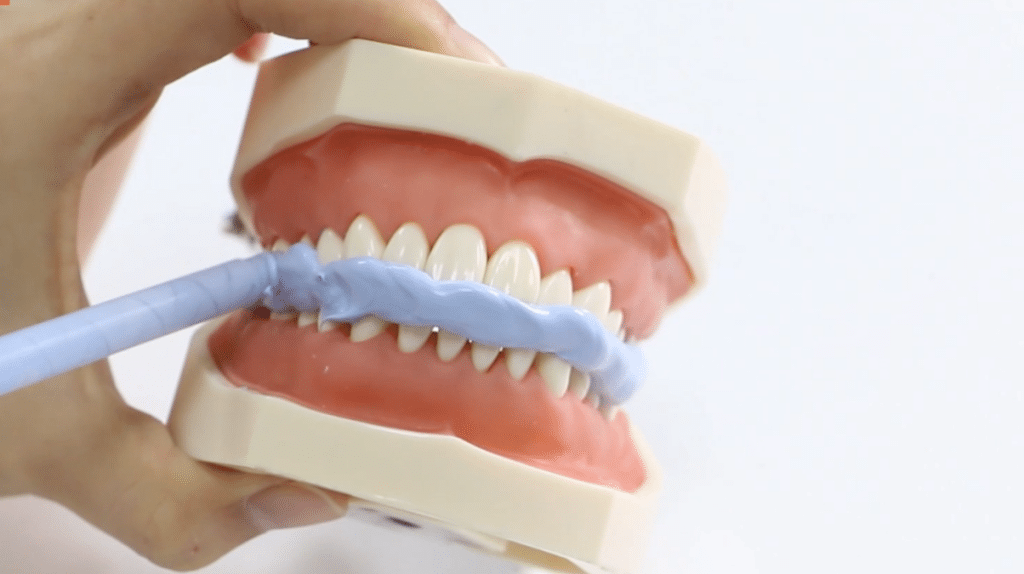One of the critical steps in the diagnosis and prognosis of treatment in dentistry is the precise acquisition of the bite registration. For dental specialists, accurate bite registration helps them make proper fitting restorations such as crowns, bridges and dentures thus reducing the. Such a recording also enables one to avoid misalignments, which may cause TMJ disorder or occlusal conditions in future.
To manage efficient and effective bite registration some guidelines are important, with various factors to be taken into consideration.
In this blog, we will focus on critical tips for creating an accurate bite registration. With the help of these recommendations, dental professionals can improve their practice in treatment, and help patients get the superior care they need. So, read to learn more.
Understanding Bite Registration
Bite registration means the recording of the interrelationship that exists between the upper and the lower teeth at the closing positions. This step is important in several dental processes, and most importantly in restorative dentistry since it aids in modelling the occlusal relationship of the patient. Inaccuracy in bite registration can therefore result in one getting the wrong crown or dentures, and this has an impact on the progress of oral health and their way of living.
Several techniques and materials exist for making bite registrations: wax, elastomers and digital techniques. Liner material and technique selection, further, depends on the specific technique, patient compliance, and the dental equipment in the practice.
Basics for Attaining a Good Bite Registration
Choosing the Right Material
The first aspect of a successful bite registration is selecting the correct material. Different materials have advantages and disadvantages like in performing different treatments.
Wax: Wax is employed frequently in bite registration during restorative procedures with special emphasis on dentures. We found it easy to manipulate and its registration process is relatively fast. However, it can be affected by differences in temperature or patient positions, including the side that they lay on.
Polyvinyl Siloxane (PVS): It is used often because of its accurate, stable, and convenient nature to work with on many projects. PVS materials can record even the minute features of a tooth, something that is useful in conservation especially when making crowns and bridges.
Polyether: Having known accuracy and limited flexibility it is suitable for taking highly accurate bite registrations. They are not inclined to alter over time compared to wax materials for example.
Digital Impressions: Digital bite registration entails the use of an intraoral scanner where the practitioner gets a three-dimensional image of the occlusion of the patient. Computerised impressions yield very accurate information and are popular rapidly in most modern dental practices in bite registration.
Correct Body Positioning of the Patient
The collection of a perfect bite registration depends on the positioning of the patient’s head and neck. The Head of the patient should be in a normal and comfortable position so that there will not be much movement or strain on the part. Proper head instruction is important so that the jaws are set parallel to each other during the bite registration to produce an accurate impression.
You should advise your patient to sit in the dental chair leaning forward and leaning back a little with the occlusion in the zero-degree position. Do not let them turn their head or move around much during the procedure because any motion will influence the position of the bite registration.
Proper Jaw Alignment
Before holding a bite registration, make sure that the caps of the maxilla and mandible are in positional correction. The position in which the patient’s teeth appear should be as non-symmetrical as possible, thus the occlusal plane should be as close to horizontal as possible. I would suggest telling the patient that if they cannot have the natural bite anymore to slightly drop the jaw to get the correct measurement.
In general, if the patient has a TMJ disorder or may have compromised occlusion because of anatomic misalignment, the operator should need a specific occlusion technique. In some instances, it may be advisable to consult the prosthodontics dentist in order to avoid going around in circles in what concerns alignment before proceeding to bite registration.
Monitoring Patient Comfort
Its importance is felt in the bite registration exercise as any movement on the comfort of the patient may lead to inaccuracies. Carefully cope with the situation and make sure the patient knows the sequence of actions to calm them down. Depending on the material chosen some produce discomfort or gag reflex, therefore the material chosen should not inconvenience the patients especially those with a sensitive palate.
Also, make sure that bite registration material is inserted properly and that the patient bites in the way you want them to. This means making the patient bite and hold the registration material lightly against the upper teeth for a short duration is an effective way of getting accurate registration of occlusion together with minimal distortion.
Enhance Your Practice with Accurate Bite Registration Solutions
Obtaining accurate bite registration is one of the main goals of dentists’ work; it is crucial to restoring orthopaedic treatments. Dental Avenue provides you with a comprehensive range of bite registration products designed to meet the diverse needs of dental professionals. Their products such as polyvinyl siloxane (PVS) and other new-age elastomers are designed to deliver tremendous precision and stability.
Regardless of the need for conventional wax-based registrations or state-of-the-art digital solutions Dental Avenue offers accurate solutions. They excel among senior dental practitioners from across the country, due to convenience, comfort to the patients, and excellent accuracy of impression. With Dental Avenue’s bite registration solutions, you can achieve more precise restorations, avoid mistakes, and increase your chances of your patient’s treatment being successful. Stop by their collection today to see how their offerings can help improve your practice.
